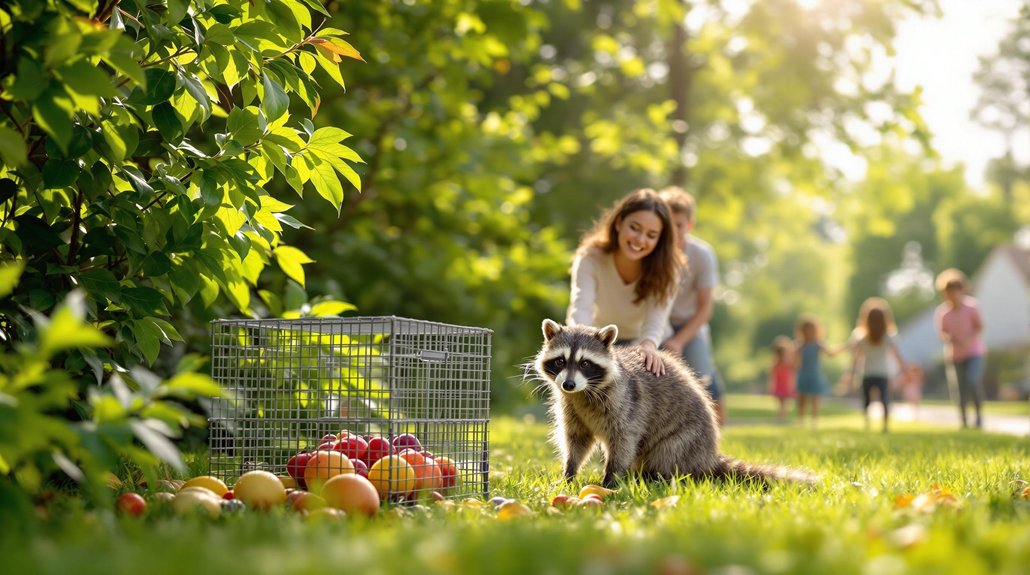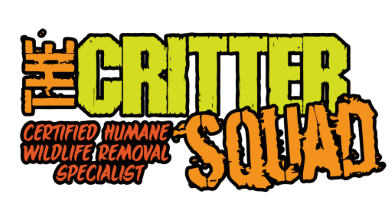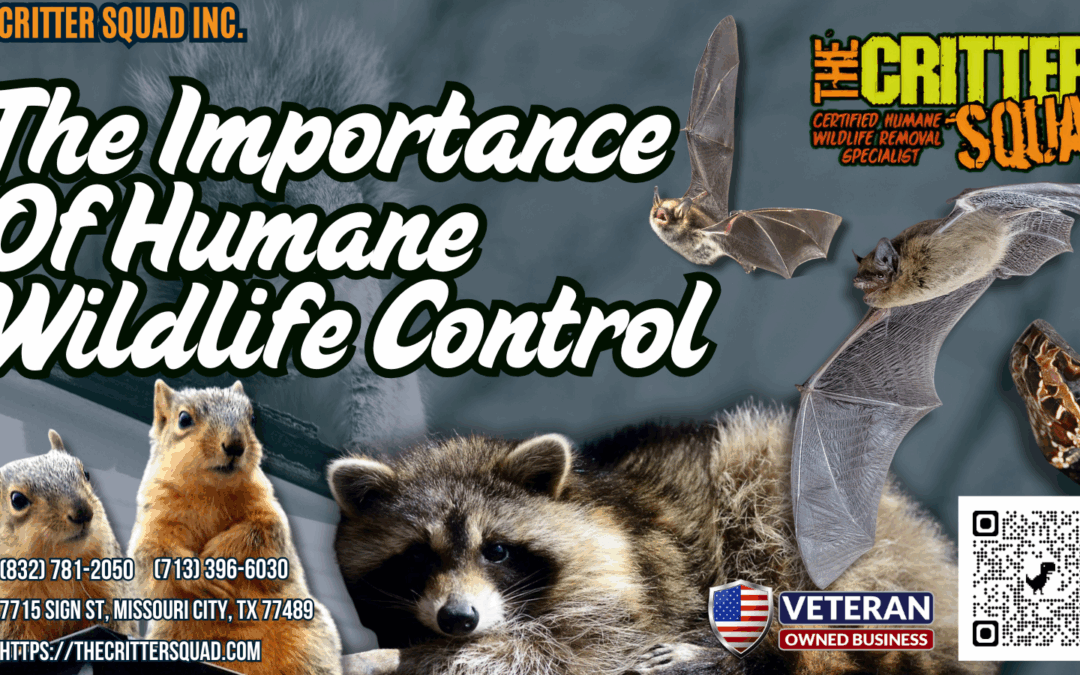Humane wildlife control is essential for ensuring harmony between humans and wildlife. It emphasizes non-lethal methods that protect both animals and human interests. By focusing on coexistence, community education, and habitat modification, these approaches reduce conflicts while promoting ecological balance. Understanding local wildlife behavior encourages compassion and responsibility towards nature. This not only benefits animal welfare but also enhances community quality of life. There is much more to explore about these important practices and their impact on ecosystems.
Key Article Highlights
- Humane wildlife control prioritizes animal welfare, promoting non-lethal solutions that foster coexistence between humans and wildlife.
- It reduces conflicts arising from urban expansion by educating communities on wildlife behavior and prevention strategies.
- Non-lethal methods contribute to ecological balance, ensuring biodiversity and healthier environments for both wildlife and humans.
- Community engagement in humane wildlife management fosters stewardship and collective responsibility towards local ecosystems.
- Raising awareness through education enhances appreciation for wildlife, leading to more effective conservation efforts and reduced negative encounters.
Understanding Humane Wildlife Control
Understanding humane wildlife control is essential for addressing the challenges posed by wildlife in urban and suburban areas. This approach emphasizes wildlife ethics and animal welfare, ensuring that animals are treated with respect. Instead of harmful methods, humane control focuses on non-lethal solutions that allow wildlife to coexist with humans. Recognizing the importance of animal well-being, this method promotes strategies such as habitat modification, exclusion techniques, and the use of deterrents. These practices not only protect human interests but also safeguard animal populations. By fostering understanding and compassion for wildlife, communities can create a balanced environment where both people and animals can thrive. Implementing humane bat removal methods is a prime example of such ethical wildlife control. For example, understanding the bat behavior in your area can significantly improve the effectiveness of humane exclusion techniques. Additionally, considering the raccoon control methods that prioritize humane trapping can lead to better coexistence outcomes. Ultimately, humane wildlife control reflects a commitment to ethical treatment and coexistence.
The Benefits of Non-Lethal Methods
Non-lethal methods of wildlife control offer eco-friendly solutions that benefit both animals and the environment. These approaches help manage animal populations in a sustainable way, reducing the need for harmful practices. By focusing on humane strategies, communities can promote a balanced coexistence with wildlife.
Eco-Friendly Wildlife Solutions
Many people are now recognizing the importance of eco-friendly wildlife solutions that prioritize humane treatment of animals. These solutions often involve eco-friendly practices that respect animal life while addressing human-wildlife conflicts. Humane traps are a key element of this approach, allowing for the safe capture and relocation of animals without causing harm. This method not only protects wildlife but also supports a balanced ecosystem. By choosing non-lethal methods, individuals contribute to a healthier environment and promote coexistence with nature. Additionally, these practices can reduce the negative impact on local wildlife populations, ensuring that future generations can enjoy the rich diversity of wildlife. Embracing eco-friendly wildlife solutions reflects a commitment to compassion and responsibility towards all living beings.
Long-Term Population Management
While addressing wildlife populations, employing non-lethal methods can lead to sustainable and effective long-term management strategies. These strategies focus on maintaining healthy population dynamics and fostering natural ecosystems. The benefits of non-lethal methods include:
- Habitat Restoration: Enhancing habitats encourages wildlife to thrive in their natural environments.
- Population Control: Non-lethal methods help manage population growth without harming animals.
- Community Involvement: Engaging local communities fosters a sense of stewardship and responsibility towards wildlife.
- Biodiversity Preservation: Protecting various species guarantees a balanced ecosystem and promotes resilience against environmental changes.
Addressing Human-Wildlife Conflicts
As urban areas expand into wildlife habitats, conflicts between humans and animals have become increasingly common. These conflicts often arise from competition for resources, such as food and shelter. Effective conflict resolution is essential to manage these interactions peacefully. Coexistence strategies can help reduce tensions and promote understanding between humans and wildlife. For example, educating communities about local wildlife can foster respect and awareness, leading to safer behaviors. Simple measures, like securing trash and using animal-proof fencing, can minimize unwanted encounters. Additionally, employing humane squirrel removal methods in cases of infestations helps prevent unnecessary harm to animals. Recognizing opossum behavior can aid in identifying potential problems early and prevent dangerous situations. By implementing these strategies, people can learn to live alongside wildlife without resorting to harmful methods. Ultimately, fostering a respectful relationship with nature benefits both humans and animals, allowing for a harmonious existence.
Promoting Ecological Balance
Promoting ecological balance is essential for maintaining healthy natural ecosystems. By focusing on sustainable wildlife management, communities can reduce human-wildlife conflict and protect local habitats. This approach guarantees that both people and wildlife can coexist harmoniously.
Preserving Natural Ecosystems
Preserving natural ecosystems is essential for maintaining ecological balance, as every species plays a significant role in its environment. Biodiversity preservation is key to ensuring that ecosystems can thrive and provide essential ecosystem services. These services, in turn, support human life and well-being. Here are four reasons why preserving natural ecosystems matters:
- Habitat Protection: Healthy ecosystems provide shelter for countless species.
- Pollination: Diverse species contribute to the pollination of plants, important for food production.
- Water Quality: Natural ecosystems filter and purify water, ensuring clean resources.
- Climate Regulation: Ecosystems help regulate temperature and carbon levels, affecting global climate health.
Through humane wildlife control, individuals can support the preservation of these essential ecosystems, fostering a more balanced and free environment.
Reducing Human-Wildlife Conflict
Human-wildlife conflict arises when animals and humans interact in ways that lead to negative outcomes for both. This conflict often stems from habitat loss and encroachment on natural spaces. To reduce such conflicts, habitat preservation is essential. By protecting wildlife habitats, communities can create safer environments for both animals and people. Additionally, community engagement plays an important role in fostering understanding and cooperation. When individuals come together to learn about local wildlife, they can implement strategies to coexist peacefully. This can include educating others on the significance of respecting natural spaces and promoting wildlife-friendly practices. Ultimately, reducing human-wildlife conflict not only benefits animals but also enhances the quality of life for human communities, creating a balanced ecosystem for all.
Sustainable Wildlife Management
Sustainable wildlife management plays an essential role in maintaining ecological balance. By focusing on the health of ecosystems, it guarantees freedom for both wildlife and humans. Key strategies include:
- Wildlife Corridors: These pathways connect habitats, allowing animals to move freely and safely.
- Habitat Restoration: Reviving damaged ecosystems helps to support diverse species and promotes stability.
- Community Involvement: Engaging local communities fosters a sense of responsibility towards nature.
- Research and Monitoring: Continuous study of wildlife populations aids in informed decision-making and policy development.
Through these methods, sustainable wildlife management not only conserves species but also enhances the natural world, guaranteeing a balanced coexistence for all living beings.
Sustainable Solutions for Communities

As communities grow and develop, the need for effective wildlife management becomes increasingly important. Sustainable solutions involve community engagement and wildlife stewardship. By working together, residents can create strategies that protect both people and local wildlife. This can include planting native gardens that provide habitats for animals or organizing clean-up events to remove litter that can harm wildlife. Encouraging responsible behaviors, such as not feeding wild animals, fosters coexistence. Communities can also establish guidelines that respect wildlife while ensuring safety. Implementing rodent proofing measures can help prevent infestations and protect homes. Understanding rat nesting habits and signs of infestation can further aid in early detection and management. By promoting awareness and collaboration, neighborhoods can maintain a balance between nature and human activities. These sustainable practices not only benefit the environment but also enhance the quality of life for everyone in the community.
The Role of Education and Awareness
How can education and awareness reshape community attitudes toward wildlife? By fostering understanding and compassion, wildlife education plays a significant role in promoting humane wildlife control. Increased public awareness can lead to more effective solutions that respect both animals and humans. Here are four key benefits:
- Enhanced Understanding: Knowledge about local wildlife helps people appreciate their role in the ecosystem.
- Reduced Conflicts: Awareness of humane solutions decreases negative encounters with wildlife.
- Community Engagement: Educated citizens are more likely to participate in conservation efforts.
- Support for Initiatives: Increased public awareness can drive support for humane wildlife control programs.
Through education, communities can learn to coexist peacefully with wildlife, ensuring freedom for all living beings.
Frequently Asked Questions
What Types of Wildlife Are Commonly Involved in Human-Wildlife Conflicts?
Common wildlife involved in human-wildlife conflicts includes urban raccoons and suburban deer. These animals often seek food and shelter near human habitats, leading to encounters that can create challenges for both wildlife and residents.
How Can I Identify Signs of Wildlife Presence on My Property?
To identify signs of wildlife presence on a property, one should look for wildlife tracks and droppings identification. These signs indicate which animals may be nearby, helping to assess potential human-wildlife interactions.
Are There DIY Humane Traps Available for Homeowners?
Like a fisherman casting a net, homeowners can find DIY solutions for humane trapping. These traps allow for safe capture of wildlife, ensuring that animals are treated with care while resolving property concerns effectively.
What Should I Do if I Encounter an Injured Animal?
When encountering an injured animal, one should provide basic first aid, if possible, and contact a local animal rehabilitation center. It is crucial to guarantee the animal receives proper care and support for recovery.
How Can Local Governments Support Humane Wildlife Control Initiatives?
Local governments can support humane wildlife control initiatives by promoting community awareness through educational programs and workshops. Additionally, they can engage in policy development that establishes guidelines for responsible wildlife interactions and management practices.




























